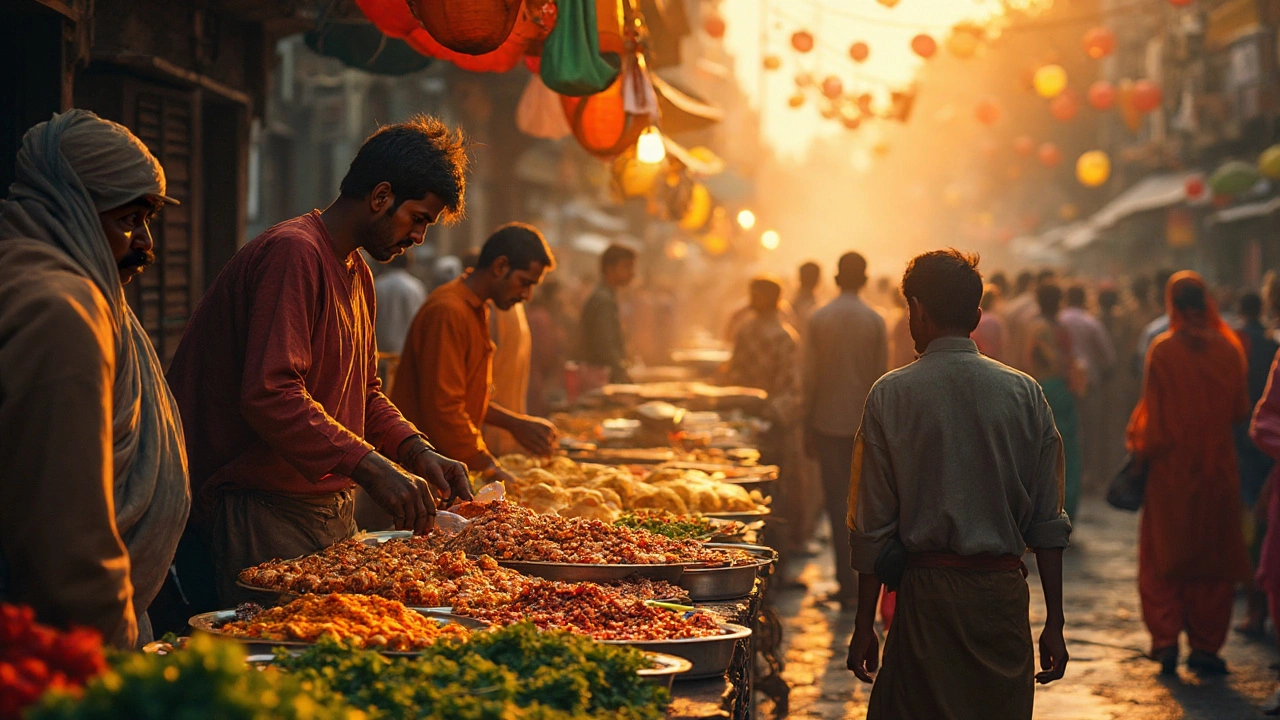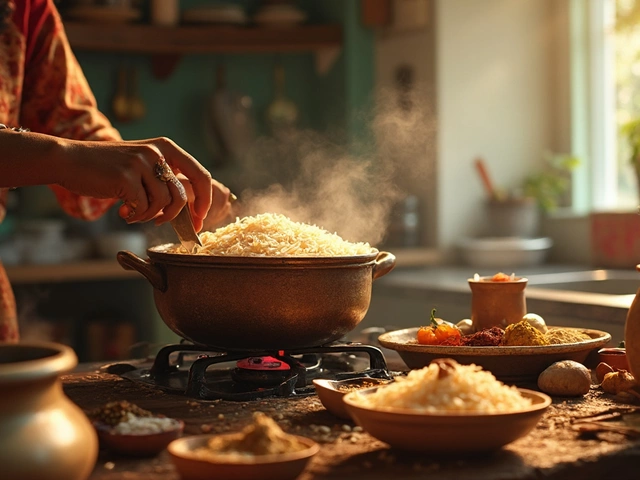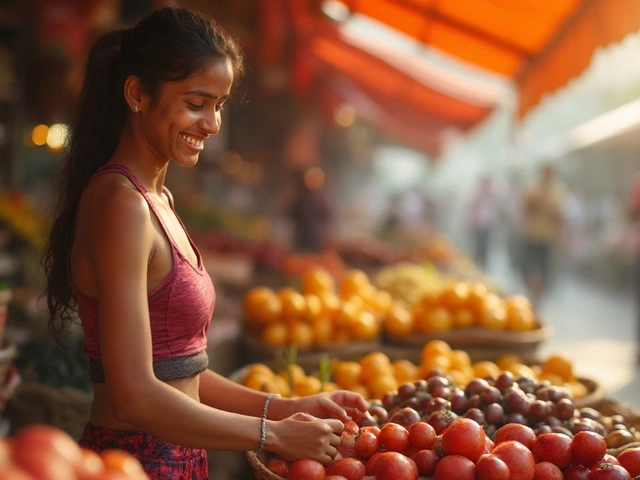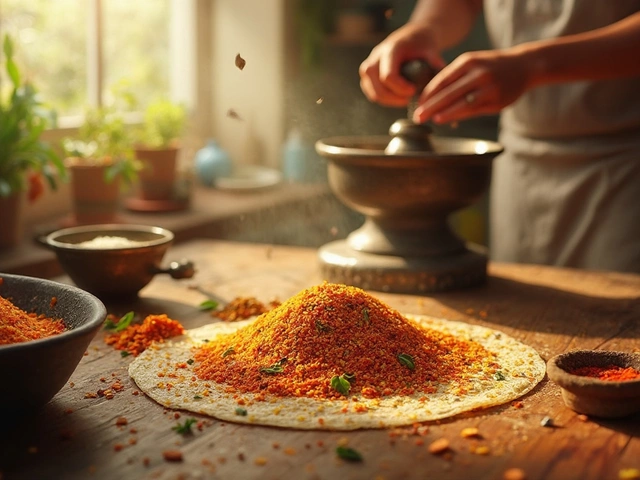Close your eyes for a second. Imagine that dizzying aroma of spices, something sizzling in hot oil, and a riot of colors on plates all around you. There's a reason people chase Indian food in cities all over the world—once you try the best of India, your tastebuds will never be satisfied with bland food again. Picking the single tastiest Indian foods almost feels unfair to the rest, but some bites are just legendary. So, what makes one food stand higher than the rest in the land of bold flavors?
India’s Obsession: Why Street Food Stands Out
There’s magic in eating from a street cart, shoulder to shoulder with locals. It’s loud, a little chaotic, always fresh, and unapologetically spicy. Unlike fancy restaurant plates, street food gets at the country’s soul.
Across India, vendors set up before dawn. By noon, their bhel puri, pani puri, and samosas are flying off the counter. The rush is not just for the low price, but for flavors you can’t get at home. Picture a Kolkata puchka seller: he punches a little hole in a crisp puri, stuffs it with spiced potatoes, dunks it in tamarind water, hands it over—all in three seconds flat. It’s a whole performance, and the bite is an explosion of sweet, spicy, tangy, and crunchy.
Mumbai has vada pav, their ‘spicy burger’: soft bun cradling a potato fritter with chutneys, onions, and a hit of garlic. Delhi can’t survive without chole bhature—pillowy bread with spicy chickpeas, best eaten so hot the steam fogs your glasses. Chennai’s dosa stalls serve paper-thin crepes with sambar and coconut chutney, crisp outside with creamy potato filling inside. In Hyderabad, people line up at odd hours for spicy biryani from ancient kitchens. And all over India, chaat—meaning ‘to lick’, literally—takes over evenings, with its chaotic mountain of flavors, colors, and textures.
You might hear stories about certain street foods causing a fuss, like golgappa eating competitions or late-night fights over the last plate of pav bhaji. The wild thing is: even among millions of people, you’ll find loyalists to their city’s or even one vendor’s version.
Regional Favorites: Why Every State Has a Signature Dish
India’s food map is as diverse as its languages—what’s legendary in one state might be unknown elsewhere. In Punjab, people swear by buttery dal makhani and rich naan, best enjoyed in a roadside dhaba with a glass of lassi thick enough to stand a spoon in. In the misty hills of the Northeast, you’ll find momos—steamed dumplings filled with spicy chicken, served with fire-hot red chutney and clear soup—set against tea gardens and pine forests.
Head west to Gujarat and you’re greeted with snacks like dhokla, soft and bouncy steamed cakes made from fermented rice and chickpea batter. They’re topped with mustard seeds, coriander, and grated coconut. Goan cuisine bursts with xacuti and vindaloo; coastal Kerala leans heavy on coconut milk and seafood, with dishes like appam with stew or banana leaf-wrapped fish cooked with tamarind and chilies.
Rajasthan cooks up dal baati churma—a trio of spicy lentils, baked wheat balls, and sweet, crumbly churma. Those wheat balls? Traditionally baked in open wood fires. Head south and you’ll taste Hyderabadi Haleem, a slow-cooked wheat, meat, and spice porridge that’s equal parts comforting and complex, especially during Ramadan. Even smaller regions shine: Lucknow’s Tunday Kababi’s seekh kebabs are melt-in-your-mouth soft, thanks to a mix of minced meat and over 100 spices (no joke, some recipes are family secrets).
| Region | Signature Dish | Main Flavors |
|---|---|---|
| Punjab | Dal Makhani, Naan | Buttery, earthy, spiced |
| West Bengal | Fish Curry (Machher Jhol) | Mustard, fresh fish, tomatoes |
| Maharashtra | Vada Pav | Spicy, starchy, savory |
| Hyderabad | Biryani | Complex, aromatic, spicy |
| Kerala | Appam & Stew | Coconut, mild spices, savory |
So, the tastiest thing is never universal. For locals, the “best” is sometimes the food cooked by their grandmother; for a traveler, it might be something fiery or sweet tasted for the first time at a roadside stall or humble canteen.
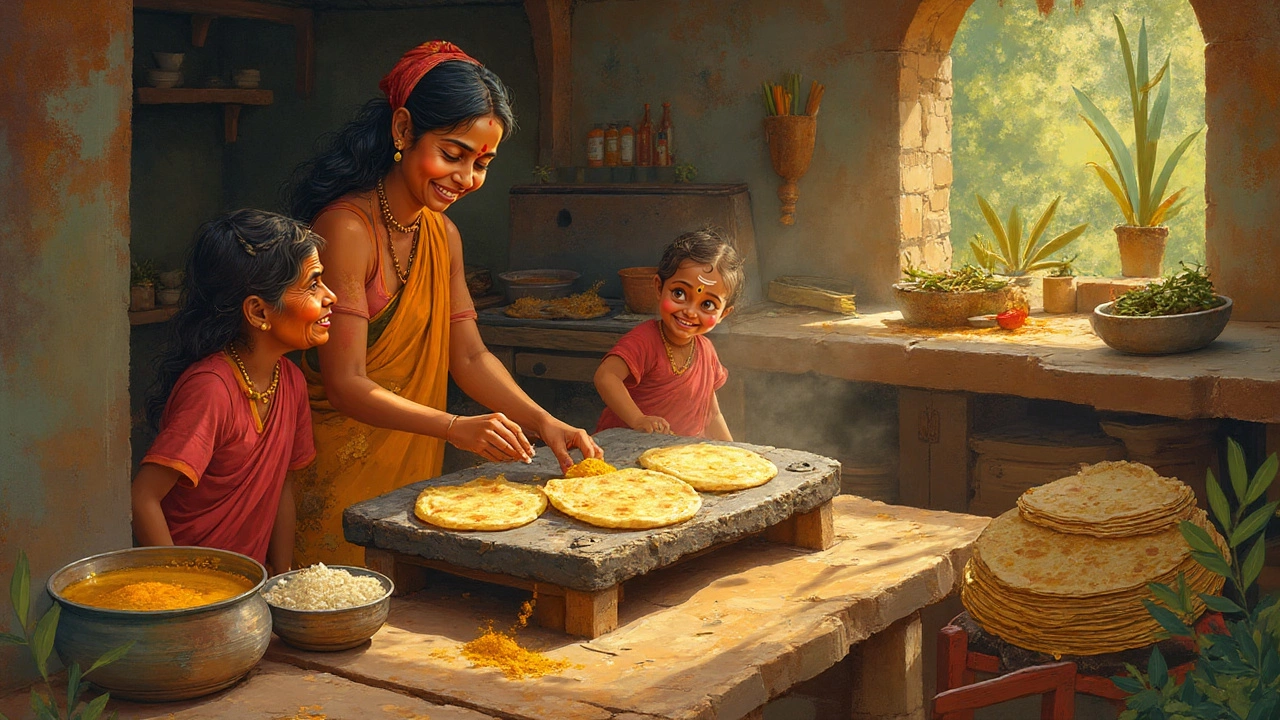
The Sweet Side: Why Indian Desserts Are a Whole World
Let’s not skip dessert—because India’s sweet tooth is unmatched. After all those spices, something sugary is almost non-negotiable.
North Indian sweets like jalebi, those orange spirals dunked in sizzling oil then dipped in syrup, are best eaten hot at a sweet shop window. Down south, you’ll spot Mysore pak, a grainy, rich fudge from Karnataka made with so much ghee that it just dissolves on your tongue. Bengal’s pride? Rasgulla and sandesh—spongy balls of chhena cooked in syrup or soft paneer-based sweets, respectively. Come Diwali, Holi, or even a random weekend, no one needs an excuse to load up a plate.
And there’s more to the story: some of these desserts date back hundreds of years. For example, the iconic barfi (milk fudge) was supposedly invented as a portable energy snack for travelers, while laddu is handed out in temples and wedding ceremonies as a blessing. Kulfi—imagine a richer, denser cousin to ice cream—comes in flavors like rose, mango, pistachio, or even paan (betel leaf). Fresh rabri is ladled out in clay pots, served cold on searing hot days. Even the humble rice pudding, known as kheer in the north and payasam in the south, makes an appearance at every celebration.
If you’re chasing calories, here’s a tip: the ghee-drenched sweets from Rajasthan or Gujarat hit differently, especially when eaten with a cup of chai. And for anyone unsure about their sweet preferences? Just ask the vendor for a thali (tasting platter)—it’s the only way to taste several in one go.
What Locals Say: Stories, Rivalries, and True Food Legends
Ask anyone in India, “What’s the tastiest thing you’ve ever eaten?” and you’ll get a passionate answer—and sometimes a heated debate. The most intense food rivalries run between cities that are famous for the same dish. Delhi and Amritsar, for instance, both claim to own the best chole bhature. Hyderabad’s biryani gets compared to Lucknow’s ‘Awadhi’ style, with rice and meat slow-cooked together, and fans can get downright poetic about why their pick is the king.
Then there’s the “home is best” crowd—those who say no restaurant can beat a mother’s hand-rolled rotis, or a grandmother’s secret masala blend thrown into Sunday’s chicken curry. Urban legends swirl around tiny stalls: Some say the spicy fish fry outside Mumbai’s Churchgate station uses a secret blend of 18 spices; others chase stories of a thali serving 32 miniature dishes in Madurai’s mess halls.
Sometimes the tastiest dish is about the moment. Stumbling into a late-night jalebi shop after a wedding. Biting into your first roadside vada pav with masala chai in pouring rain. Or gobbling up fiery chutneys with smokey tandoori chicken at a highway stopover. These rivalries don’t just add drama—they keep the food scene vibrant and always evolving. Foodies will walk extra miles or stand hours in line for their favorites—just check the queues outside famous places like Karim’s in Old Delhi or the Irani cafés in Pune. Some are gone by 1 p.m., proving once and for all the phrase “sold out” carries real heartbreak for Indian food lovers.
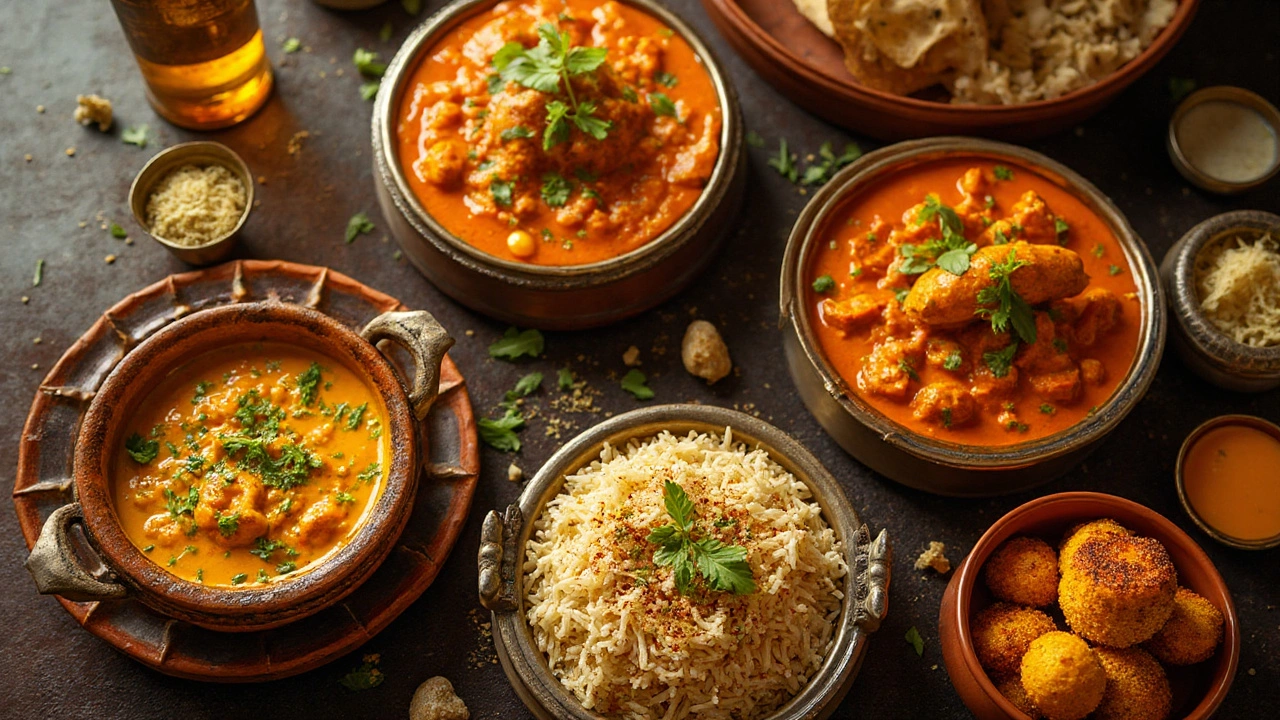
Tips to Find and Relish India’s Tastiest Foods
If you want the real deal and not tourist-trap versions, here’s how to chase the tastiest Indian foods like a local. First: trust your nose and your eyes. If there’s a crowd, and people look happy, that’s step one. Don’t hesitate to join lines, as the best food often draws a loyal crowd. Be bold with street food—vendors are usually quick and clean, and their reputations live or die by word of mouth.
- Carry cash—popular stalls don’t do cards.
- Strike up conversations. Locals love sharing their go-to snacks or breakfast joints.
- Follow the seasons. Summer brings mango-based treats, while winter is for rich halwas and saffron-laced milk drinks.
- Spice heat varies dramatically. If you’re not sure, ask the vendor to make it ‘medium’ or request sweet chutney to tone things down.
- Look for rotating specialties—some places serve the best samosas only on Fridays, or make fresh jalebi at sunrise.
If you’re in a bigger city, there are food walks and heritage tours specifically designed to hit the legendary spots. But sometimes, the real gem is a half-hidden shop tucked in an alley, discovered because a rickshaw driver suggested it. In recent years, even luxury hotels and upscale restaurants have started serving “chaat menus” and pop-up street food fests. But, if you’re after a plate with heart, it’ll probably come sizzling off a cart or kitchen that’s survived generations.
So, what is the tastiest thing in India? The most honest answer: whatever you eat next, with locals all around, open to the wild flavors the country throws at you. And once you taste it, you’ll get why chasing the best bite is a full-time sport here.





